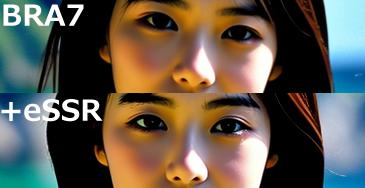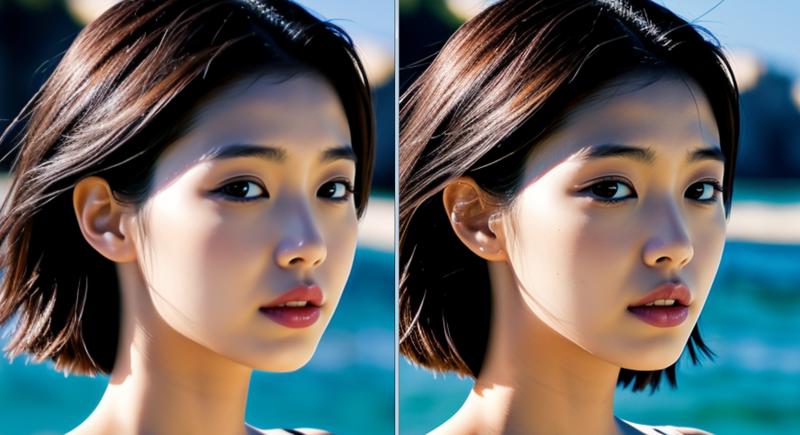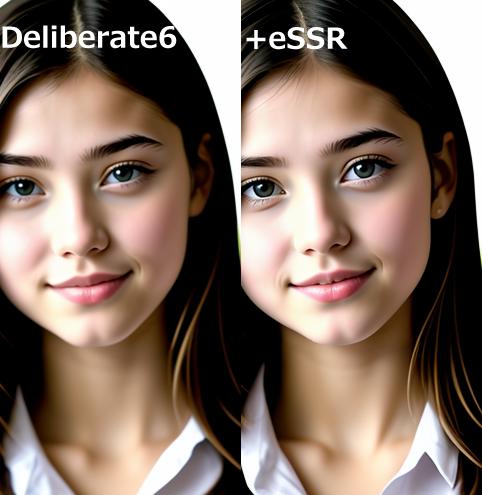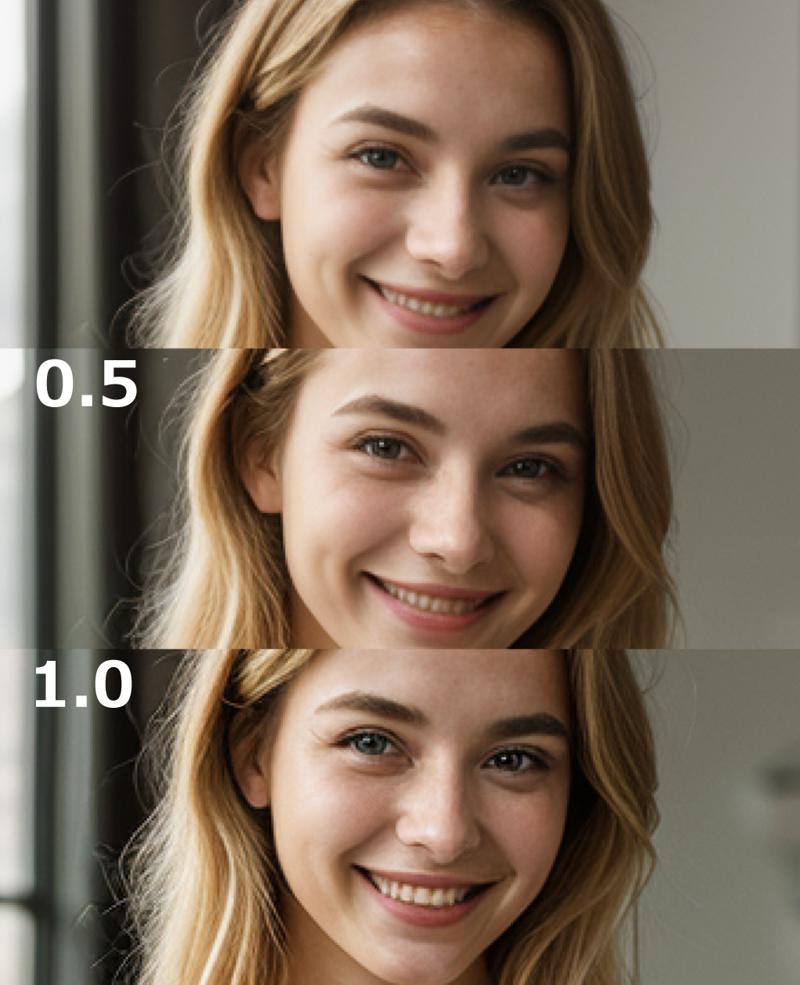Have you ever felt that even after applying Hires.Fix or Adetailer, the image still doesn't seem to be in focus?
This is LoRA, which was created with the aim of achieving super-resolution. High-resolution data is available, so it should be possible to perform theoretical super-resolution processing.
The actual effectiveness of this method depends on the model and the image. Since this method uses AI, the closer the image is to the training data, the more effective it will be. Here, I have prepared eSRR-Human, which is mainly adjusted for human faces. It is possible to use them simultaneously, but if the total applied value becomes large, it will break down even if it is strong enough to be used alone. In addition, it is not suitable for models that produce images with a high level of detail from the beginning. It is suitable for slightly older models that have learned a lot of unfocused photos taken by amateurs. Recent models have their faces solidified with LoRA, so the effect is weaker.

Basically, this is a process that applies sharpness. Please remember that it does not always produce good results.
It is trained to match sharp images to blurry images, so it is not very effective for images that are sharp from the beginning. If applied very strongly, it works on almost any image, but the side effects are too strong. For eSRR-Human, it is better to use it strongly only in the prompt for the face part of Adetailer.

Of course, it is possible to add more detail to an image that has sufficient detail, but that does not necessarily result in a good image. Excessive sharpness will make jagged edges more noticeable. In fact, using this LoRA in the negative direction to create a softer image with anti-aliasing may increase the apparent resolution.
+ direction: Increases the sense of focus. Adds details
- direction: Makes the texture softer. Decreases the sense of focus
Use each according to its characteristics.

Note that adding details does not mean adding new elements like AddDetail or MoreDetail. It is a process that reproduces details that would have been crushed and lost in the image.
The appropriate strength to use varies depending on the model. Some models can be turned up to about 10, but for models with many elements, 0.4 may be the limit. The lower the strength, the weaker the effect. If you use it in a way that doesn't destroy the original image, you won't see much of an effect.
Try using it on images that seem a little out of focus.
Also, since the block weight hasn't been adjusted, it may be possible to use it more effectively by using LBW.
In fact, I also created eSRR-Env, which is suitable for backgrounds and other purposes, assuming that it will be used for things other than humans, but I decided not to present it because it seems to have strong and weak points. In the first place, there may not be many uses for making the background clear.
 (epiCRealistic naturalSin, no HiRes.fix outputs closeup)
(epiCRealistic naturalSin, no HiRes.fix outputs closeup)

